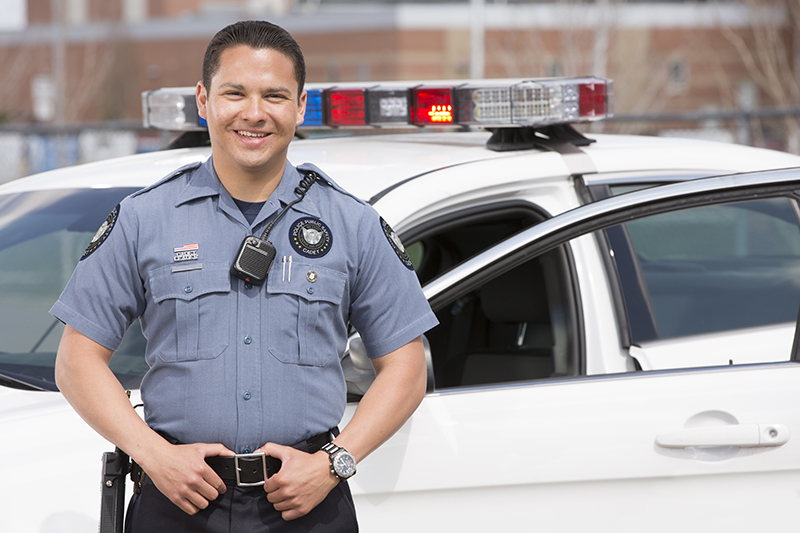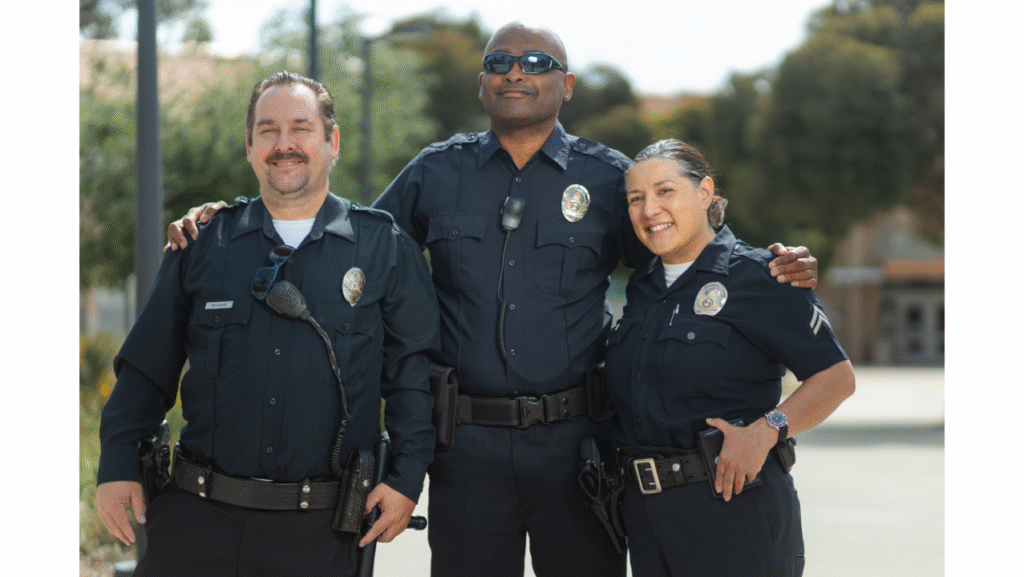
Major U.S. cities are reimagining community policing through neighborhood partnerships, technology integration, youth outreach, and crime-prevention programs. From New York’s Neighborhood Coordination Officers to Chicago’s violence interruption networks and Los Angeles’ community-led safety initiatives, these strategies aim to build trust, reduce crime, and promote collaboration between law enforcement and residents.
Introduction: Why Community Policing Matters Today
Public safety in America has entered a new era. Concerns about rising crime, racial equity, police accountability, and the need for stronger neighborhood relationships have put community policing at the center of national conversations.
Unlike traditional models of policing that emphasize rapid response and crime suppression, community policing focuses on collaboration, prevention, and trust-building. It is about officers not just patrolling neighborhoods but being part of them—engaging with residents, attending community events, and finding proactive solutions to the root causes of crime.
The Bureau of Justice Statistics reports that over 70% of U.S. police departments now use some form of community policing strategy. Yet, the approaches differ greatly depending on the city, its history, and the unique challenges its communities face.
This article provides an in-depth look at what community policing initiatives are being implemented in major cities, highlighting real-life examples, innovative strategies, challenges, and frequently asked questions that Americans are asking today.
What Does Community Policing Really Mean?
Community policing is more than a policy—it is a philosophy of public service. At its core, it rests on three foundational pillars:
- Partnerships: Collaboration with residents, local businesses, nonprofits, faith leaders, schools, and health providers.
- Problem-Solving: Identifying and addressing root causes of crime and social disorder instead of relying only on enforcement.
- Organizational Change: Transforming police culture to value transparency, accountability, and service-oriented leadership.
This model acknowledges that policing cannot succeed in isolation. Instead, public safety must be co-produced with communities, ensuring that people feel both safe and respected.
Which Major Cities Are Leading in Community Policing?
New York City: Neighborhood Coordination Officers (NCOs)
New York City has pioneered a model called the Neighborhood Coordination Officer (NCO) Program, designed to build long-term relationships between officers and the communities they serve.
Instead of rotating frequently, NCOs remain assigned to a specific neighborhood. They attend local events, engage in problem-solving with residents, and are accessible by phone or email. This builds accountability and fosters familiarity.
Real-life example: In the Bronx, NCOs helped reduce gang-related shootings by organizing youth basketball leagues, job fairs, and mentoring circles. By offering alternatives to crime, they bridged the gap between law enforcement and vulnerable youth populations.
Chicago: Violence Interruption and CAPS
Chicago is often in the spotlight for its struggles with gun violence, but the city has also been a leader in community-oriented policing. Its Chicago Alternative Policing Strategy (CAPS) is one of the longest-running community policing models in the U.S.
CAPS prioritizes monthly neighborhood meetings where residents and police collaborate on identifying and solving local issues. Beyond CAPS, Chicago partners with violence interruption organizations like Cure Violence and Chicago CRED. These groups employ trained “violence interrupters”—often former gang members—who mediate conflicts before they escalate.
A University of Chicago study (2022) found that neighborhoods consistently engaged in CAPS reported 20% more trust in local police compared to those without such sustained engagement.
Los Angeles: Community Safety Partnerships (CSP)
The Los Angeles Police Department’s Community Safety Partnership (CSP) is a nationally recognized program. CSP officers are embedded in public housing communities, focusing less on enforcement and more on trust-building.
Instead of arrest quotas, success is measured by community trust and well-being. Officers host sporting events, lead youth mentorship programs, and collaborate with nonprofits on job training initiatives.
Case in point: In Watts, CSP officers worked with residents to revitalize local parks. This led to a 40% increase in park use, offering safer spaces for recreation and reducing gang activity in the area.
Washington, D.C.: Building Community Trust
Washington, D.C.’s Metropolitan Police Department (MPD) has leaned heavily into trust-building strategies. Programs include:
- Community listening sessions.
- Citizen advisory councils.
- Youth cadet programs that encourage high school students to pursue public service careers.
Resident impact: In Wards 7 and 8, residents reported feeling more respected after officers began attending local cookouts, block parties, and school events. This humanized officers and broke down long-standing perceptions of hostility.
Seattle: Micro-Community Policing Plans (MCPPs)
Seattle offers a unique example of hyper-local policing strategies through its Micro-Community Policing Plans (MCPPs).
Each neighborhood develops its own customized plan based on specific concerns. For example, Capitol Hill prioritized addressing car thefts, while Pioneer Square focused on homelessness. Officers, residents, and community leaders collaborate on setting goals and measuring outcomes.
A Seattle University survey showed that neighborhoods with active MCPPs report higher satisfaction in police visibility and responsiveness compared to areas without the program.
Other Examples Across the U.S.
- Boston: Runs Youth Police Academies offering summer employment and mentorship for teens.
- Philadelphia: Combats the opioid crisis with police-healthcare response teams.
- Houston: Builds trust with immigrant communities through language access and outreach.
- San Francisco: Uses mobile crisis response teams pairing officers with mental health clinicians.
- Phoenix: Implements restorative justice programs in schools to divert youth from the criminal justice system.
How Is Technology Supporting Community Policing?
Technology is increasingly shaping how community policing functions in major cities:
- Body-Worn Cameras: Enhance accountability and transparency, reducing citizen complaints.
- Mobile Reporting Apps: NYPD’s “CopStat” app allows residents to file non-emergency reports quickly.
- Real-Time Crime Centers: Chicago’s Strategic Decision Support Centers integrate data and local intelligence for proactive policing.
- Social Media Engagement: Police departments in Los Angeles and Houston use Twitter and Instagram to provide updates, humanize officers, and directly interact with residents.
Still, there is debate about the ethical implications of surveillance. Communities of color, in particular, express concern that expanded monitoring could erode trust rather than strengthen it.
What Are the Challenges in Implementing Community Policing?
Despite its promise, community policing faces real obstacles:
- Budget Constraints: Sustaining programs requires steady funding, which is often cut during fiscal crises.
- Community Skepticism: Decades of mistrust cannot be undone overnight, especially in historically marginalized neighborhoods.
- Officer Buy-In: Some officers view community engagement as “soft policing” compared to enforcement.
- Measuring Success: Arrest numbers are easy to track, but relationship-building and trust are harder to quantify.
Example: In Baltimore, attempts at community policing after the 2015 unrest faced setbacks. Residents felt that reforms promised after Freddie Gray’s death were not matched by consistent action, deepening mistrust.

What Questions Are Americans Asking About Community Policing?
Is Community Policing Effective in Reducing Crime?
Research suggests that community policing indirectly reduces crime by fostering cooperation. For example, Los Angeles’ CSP reported double-digit declines in violent crime in some public housing projects.
How Do Citizens Get Involved in Community Policing?
Ways for residents to participate include:
- Attending neighborhood policing meetings.
- Joining citizen advisory boards.
- Volunteering for youth programs.
- Using official apps to report concerns.
Does Community Policing Replace Traditional Policing?
No. It supplements traditional methods by adding prevention, problem-solving, and collaboration to the toolkit.
What Role Do Schools Play in Community Policing?
Schools are central, often housing school resource officers (SROs) or hosting cadet programs. These initiatives blend safety with mentorship.
How Does Community Policing Address Mental Health?
Cities like Denver and San Francisco use co-response models, pairing police with mental health workers to de-escalate crises.
Is Community Policing More Expensive?
While training and staffing cost more upfront, long-term savings emerge through reduced incarceration rates and fewer emergency interventions.
Does It Work in High-Crime Areas?
Success is mixed. While some areas like Watts, Los Angeles saw improvements, Chicago’s West Side still struggles—highlighting that policing alone cannot solve systemic poverty or inequality.
Are Immigrant Communities Included in These Initiatives?
Yes. Cities such as Houston run immigrant outreach programs with translators to ensure all residents feel represented and safe.
How Do Police Officers Feel About These Programs?
Generational divides exist. Younger officers often embrace engagement, while older officers may resist shifting departmental culture.
Can Community Policing Rebuild Trust After Tragedy?
Yes, but only through sustained transparency. In Minneapolis, reforms after George Floyd’s death include civilian oversight boards and public hearings.
10 Trending FAQs on Community Policing
Q1. What are the most successful community policing strategies in the U.S.?
Successful strategies include neighborhood officer assignments that build trust, youth mentorship programs that guide at-risk individuals, and violence interruption models that de-escalate conflicts. Together, these create strong community ties, foster collaboration, and encourage safer neighborhoods by preventing crimes before they escalate while ensuring officers remain approachable and consistent.
Q2. How does community policing improve neighborhood safety?
Community policing improves safety by building familiarity between officers and residents, reducing fear of law enforcement, and encouraging cooperative crime reporting. With stronger trust, residents feel safer engaging with police, share information openly, and support problem-solving efforts that reduce criminal activities, leading to safer, more resilient neighborhoods overall.
Q3. Which city is considered a model for community policing?
New York’s Neighborhood Coordination Officer (NCO) program and Los Angeles’ Community Safety Partnership (CSP) stand as national models. Both emphasize consistent officer presence, relationship-building, and problem-solving tailored to community needs. Their approaches have shown measurable success in reducing tensions, enhancing trust, and creating collaborative environments for addressing safety concerns.
Q4. What is the relationship between community policing and racial equity?
Community policing focuses on fairness, transparency, and accountability, directly addressing systemic distrust in marginalized communities. By encouraging equal treatment, improving communication, and involving residents in decision-making, these initiatives strengthen racial equity. They reduce biased enforcement, build inclusive partnerships, and ensure historically underrepresented groups feel respected, heard, and protected.
Q5. Can community policing reduce youth involvement in gangs?
Yes. Structured mentorship, youth sports, and after-school programs supported by community policing provide positive alternatives to street life. Officers act as role models, connecting youth with resources and opportunities. By offering guidance, encouragement, and safe spaces, these efforts significantly reduce gang recruitment and promote long-term community stability.
Q6. Are community policing initiatives federally funded?
Yes. Community policing initiatives often receive support through the U.S. Department of Justice’s Community Oriented Policing Services (COPS) Office grants. These federal funds help police departments hire officers, develop training, and implement innovative community-based programs that strengthen neighborhood trust, reduce crime, and improve long-term public safety nationwide.
Q7. How do residents measure success of community policing?
Residents measure success through increased trust in officers, reduced perceptions of crime, and improved communication channels with law enforcement. Surveys, community feedback, and visible collaboration on local issues reflect effectiveness. When residents feel safer, more included, and empowered in decision-making, it signals true community policing success.
Q8. What role does data play in community policing?
Data plays a critical role by guiding resources through crime mapping, trend analysis, and predictive policing. However, community input ensures data-driven strategies remain fair and context-sensitive. Together, technology and local voices enhance accountability, focus efforts where most needed, and build stronger, more transparent community safety strategies.
Q9. Is community policing a long-term solution?
Yes, if supported by sustained funding, leadership commitment, and active community engagement. Community policing thrives when officers and residents build ongoing relationships, not short-term fixes. Its success requires cultural change within departments and neighborhoods, ensuring safer, cooperative environments where trust and collaboration replace fear and alienation permanently.
Q10. How can everyday citizens support community policing?
Everyday citizens can support community policing by attending meetings, offering constructive feedback, volunteering for local initiatives, and fostering collaboration with officers. Building trust requires shared responsibility. Residents who engage positively, advocate for fairness, and help identify issues become partners in creating safer, healthier, and more connected communities.
Key Takeaways for Citizens and Policymakers
- Community policing works best when tailored to local needs and cultures.
- Success depends on sustainable funding, consistent leadership, and mutual trust.
- Partnerships with schools, nonprofits, and health agencies amplify effectiveness.
- Residents are not passive recipients of safety—they are active partners.
Conclusion: The Future of Community Policing in Major Cities
Community policing has evolved from a buzzword into a central pillar of modern public safety. Cities across America—from New York to Los Angeles to Chicago—are experimenting with innovative strategies to build safer, more resilient neighborhoods.
